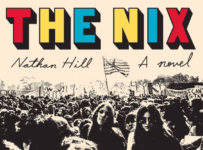
It’s unclear why they thought that Atwood’s sparing, often clinical, prose about a woman struggling to acclimatise to the freshly minted patriarchal hellworld she lives in would be a good choice for a class of fourteen year old boys. But the vagaries of the Australian education system are in the past, and you’re always allowed to read a novel again later, in your thirties.
Offred lives in the Republic of Gilead, forced into reproductive slavery. As she goes about her new routine, Offred remembers the America that was, the rights that she no longer has, and the small resistances she can exert against her strictures.
Atwood has a thing, for oddly placed commas. But she also knows how to build: a world, a novel, a woman. Offred, who never gives the reader her real name, is not indifferent to her suffering but is mostly inured to it. It takes a long while to get to know her, to find her place in the past of her retro-future. The time shifting and accumulation of facts are as an avalanche that make The Handmaid’s Tale creep up on you, and finally crush you with their weight.
Atwood resists genre, but The Handmaid’s Tale is what it is. There’s reprove a lot more books like it now, but Atwood definitely grounded her work in an extreme amount of research and across multiple waves of feminism. That doesn’t mean that her “speculative fiction” does not fit a lot of different veils. Just because people aren’t arbitrarily sorted into factions and made to kill each other in an arena within these pages (although The Handmaid Games would probably do great business), Atwood’s novel isn’t that divergent from a lot of modern output.
The Handmaid’s Tale is “back”, but of course it never went away. Some novels are products of their time but can last in perpetuity; this is one of those books where you can still taste the tobacco and the despair 32 years later.



No Responses